Open and Distance Learning (ODL) as a concept has been well entrenched with its rich literature and application. Institutions and associations have thickened the discourse on this and have exchanged best practices and have built this strong community through many, many years.
ODL is the merging of two concepts, that of “open learning” and “distance education”. This occurred when distance education (DE) institutions stated and agreed that DE is a mode of learning in which students and teachers are physically separated from each other. Students undertake guided independent study of specially-designed learning materials in various media, and two-way communication exists between the teacher and students commonly called continuing education, learner-centered education, distance learning, flexible learning, and distributed learning (Keegan, 1980).
The ODL academic community has declared that distance education should always be together with the concept of Open Philosophy of Learning. Open learning is a vision of an educational system accessible to every individual with minimal restrictions. It emphasizes the flexibility of the system to eradicate problems caused by barriers like age, geographical location, time constraints, and economic situation (Bates, 1995).
In a number of materials on open learning (OL) that have been reviewed and gone through, OL is declared as a philosophy of learning that is based on flexibility of access for equity in education. It is learner-centered, where learners determine what they want to learn, how, when and where they want to learn, how to get their learning assessed and determine their career direction.
ODL is therefore a system which combines the methodology of DE with the concepts of open learning and flexible learning (Belawati , 2008). So the community of ODL as we know it today can be traced to the establishment of the National Extension Institute in the United Kingdom in 1963 and later on the creation of the UK Open University in the late 1960s.
While openness in DE is very much tied to flexibility of the educational system, it can occur in any of the following various forms:
-
- * Openness in admission policies
- * Openness in giving credits and degrees
- * Openness in delivery modes
- * Openness in cost and affordability
- * Openness in choosing one’s educational track (open curriculum)
- * Openness in course design and evaluation
These modes of openness have been applied in open learning institutions in varying degrees over the years. While these outcomes have dominated the discourse on openness in distance learning, dramatic changes in information and communication technologies (ICTs) in recent years have added dimensions to this construct.
As we also hear, we now live in the digitized world. As of 2012, the number of Internet users in Asia is 114 million. Of the 7 billion mobile phone users in the world, 87% are in Asia.
We in habit a world shaped by e-Culture, e-Mobile, and e-Governance. Open data are now accessible to citizens from anywhere, making transactions ubiquitous. As such, more and more transactions will be made available online, mobile, and personal.
At the FUTURE-GOV convention in Phuket, Thailand held in 2013, government institutions from numerous countries were all trying to find e-solutions for their government procedures and transactions. Its advocacy is e-governance and awarding the best practices in the world and selling the culture of advocating e-government transactions in everyday life. e-Transaction has become a social contract where the general public expects efficiency, immediacy, accessibility and connectivity of all services. This social contract becomes second nature and a way of life.
It is within this context that open and distance e-learning (ODeL) has come to fruition. The explosion of knowledge and scholarly resources in the Internet and recent advances in ICTs have spurred educators to develop new methodologies and to take a closer look at pedagogies for teaching and learning.
e-Learning has proven to be a viable option in reaching out professionals and other non-traditional learners. To cater to these learners, many conventional universities have gotten into blended learning, combining traditional classroom practice with e-learning solutions. Residential universities are now finding ways to be flexible and blended and learner-centered to reach more learners. However, many conventional universities have been unable to adapt online teaching methods fast enough to ensure increased access, quality, and sustainability through the use of teaching technology. It may not be as quick to involve itself in e-learning but they are certainly strategizing the best way to be part of the movement as it is seen as the future’s mainstream teaching and learning form.
In addition to exploring more flexible teaching approaches and open system of admission, universities are also beginning to see the value of openly sharing their learning resources at no cost. The development of free and user-friendly ICT has brought down the cost of producing and distributing learning resources. This coupled with the principle that knowledge must be free has contributed to the propagation of open educational resources (OER). According to the United Nations Educational Scientific and Cultural Organization (UNESCO), OERs are “any type of educational materials that are in the public domain or introduced with an open license.” OER fits with the open learning philosophy as they expand access to learning for everyone particularly the non-traditional groups of learners.
ODeL is part of the larger worldwide movement for greater openness. In the past decade, we have been exposed to terms that are often described as “open” – open source software, open technology, etc. Recently, the academic world has been strongly influenced by OER. All these concepts evoke the same set of values: sharing, access, collaboration, and freedom.
The ‘Open’ Movement, which is part of the range of ‘Open’ philosophies and models that emerged in the 20th century, is a result of several drivers and motivations, including the free sharing of resources, preventing duplication, avoiding restrictive (copyright) practices, promoting economic efficiencies, and improving access to groups of stakeholders. Many of these have been driven and created by communities that recognize the benefits to themselves, and sometimes to the wider groups.
While the sharing of educational resources has existed in the past, the ubiquity and efficiency by which these resources are disseminated and consequently shared has been greatly enhanced by the advancements in web-based technologies.
Individuals who want to have their OERs licensed can be assisted by Creative Commons (CC), which is a non-profit organization with the advocacy of making creative works more available for people to build upon legally and to share. The organization has released several copyright licenses known as Creative Commons licenses free of charge to the public. These licenses allow creators to communicate which rights they reserve, and which rights they waive for the benefit of recipients or other creators.
When UPOU was established in the mid 1990s, the university’s take on educational resources was solely anchored on copyright principles. Our approach then was to teach primarily though copyrighted stand-alone modules in print. A few years later, we have seen an explosion in the collective sharing and creation of knowledge as more people got more connected through social media. With the rise of Web 2.0. Internet users have been transformed from mere consumers to producers of knowledge. In this digital age, knowledge is not merely transmitted, it is constructed through the interaction of people across classes, disciplines, borders, and cultures. Instead of relying on the monologue offered by a teacher or a printed module or textbook, we can now take advantage of the wide array of resources available in the Internet. In the past, academics propagate ideas primarily through the print media. With the advent of Web 2.0, we can now use a wide array of free online resources to facilitate learning. Compared to previous technologies, where the audiences of the learners are mere consumers of information, these technologies have given our teachers and learners the chance to share what they know, critique each other’s position, and discuss problems from different angles. In this way, knowledge creation becomes more relevant, participatory, and context specific.
All these developments have also changed the way we develop our educational materials. Instead of producing stand-alone course modules in print, we have decided to utilize various OERs in the web to deliver content. More than the accessibility and affordability, our reason for using OER is first and foremost pedagogical. We believe that learning goes beyond a simple transmission of knowledge from the educator to the student. Adopting a resource-based approach meant moving away from the traditional notion of the talking teacher to the use of different media to communicate content and develop learning activities. We have used OER as a material and tool for imparting concepts, developing thinking skills, and promoting creativity, self-discovery, and interactivity.
OERs have been quite useful in offering our programs. However, we also recognize that a lot of these educational resources were created by foreign authors and for foreign audiences. For learning to be truly authentic, it has to be based on the realities of our learner’s context. Even scientific concepts that are largely universal can be explained more effectively and appreciated more if these are applied and grounded in the everyday conditions of our students. There is a need to design, construct, and produce our own information, stories, experiences, interpretations, and course materials and claim our voices and spaces in the vast limitless Web. More importantly all these OERs shall be grounded on Philippine experiences and realities showing the Filipino solutions and discourses on major concerns regarding our culture, health, environment, education, livelihood, labor, governance, and the like. We must create our own materials the way we want to create them and proliferate the web for the world to see.
As we source OERs from outside the country, it is also our responsibility to participate in the knowledge commons by producing and sharing educational resources with the members of this global community. In this way, we focus our moves towards a constructivist view — creating quality and accessible educational resources, co-creating texts with teachers and learners in a global community, and making social networking go beyond generic entertainment to a repository of teaching and learning texts.
The UPOU has taken some efforts towards designing and creating OERs that are framed within the local perspective. In response to this challenge, we have recently created the UPOU Networks— an online network/station producing, programming and delivering scholarly productions through the web using a content management system programmed with various applications. The UPOU Networks produces research-based scholarly texts in various formats, from hypertext to rich media, for use in regular course offerings, special courses, and programs for the general public. The materials will vary from open educational courseware (or freeware) to courseware designed for the exclusive use of specific client groups. The materials stored in the UPOU Networks are accessible on demand subject to curatorial and programming approval by a Creative Academic Board of Advisers.
Corollary to the spread of OERs is begging the question about how OERs should configure in the actual process of learning. The OER movement has been made manifest in participation in the creation of OERs including open textbooks, participation in Creative Commons, and sharing of these resources through content management systems (CMS).
Most of the OERs have been disseminated primarily through content management systems (CMS). Jonathan Mott and David Wiley in their article “Open for Learning: The CMS and the Open Learning Network (OLN)” talks of the weakness of CMS paradigm:
Open Learning Networks should be seen as critiques of the predominant pedagogical model in higher education. They feel that institutions and instructors should aim to do more than just transfer knowledge from the professor, the library, and the textbook into their students’ brains. And they argued that while promising developments are changing the centuries-old stand-and-deliver lecture, the current technological paradigm reinforces and even hinders movement away from this model. The OLN model also has the potential to be used in support of traditional, lecture- based, content-centric courses. This is because it removes artificial time limits, allows for more student autonomy in the learning process, and opens up the learning network, thereby removing the barriers that stand in the way of those who are anxious to innovate and employ new learning methodologies. The place and time-independent nature of the web affords limitless learning activities and learner interactions that are not possible in the place and time- bound classroom (Mott and Wiley, n.d., p. 17).
For OERs to be truly meaningful, they have to be delivered and used within the context of a teaching and learning environment that promotes authentic, activity-based, flexible, and outcomes- focused learning. It must go beyond transmission from the source to the end user.
In recent years, various educational institutions have incorporated OERs in their instructional offerings. These initiatives have made OERs more relevant and useful, as they become part of well-defined learning contexts. While conventional online courses offered by educational institutions have used OERs to deliver content, access to these courses have been limited due to registration costs and cross-border limitations.
Due to the changing labor markets brought about by globalization, there has been an increasing demand for professional graduate and continuing education has steadily increased. There is a growing number of mature learners out there who do not see the university as central to their lives. These students will prefer to study part- time and acquire the skills necessary to advance themselves in their careers.
We see teaching and learning in all levels. In the work place, our industries do their own e-learning training. We see institutions with e-learning platforms offering different types of courses directly to the public. On television, we view a stream of documentaries, exposes, instructional shows, discussions on public issues. In all levels, new knowledge, teaching, and learning transpire. More and more teaching and learning happen beyond universities and colleges.
The rapidly expanding need for lifelong learning, the rise of OERs, the ubiquity of information sources, the decreasing cost of delivering courses due to the affordances offered by the web, and the greater pressure for higher education institutions to reach out to an increasingly diverse learners have led to the development of the Massive Open Online Courses (MOOCs).
According to Educause (2011, p.1), MOOC is “a model for delivering learning content online to virtually any person—with no limit on attendance—who wants to take the course.” It “provides access to large numbers of people who might otherwise be excluded for reasons ranging from time, to geographic location, to formal prerequisites, to financial hardship” and facilitates the entry of individuals into communities of practice without the usual pressures and limitations of conventional modes of learning (McAuley, 2010, 6). In MOOCs, the learning activities are modified to suit the requirements of a more fluid and much large class. Social media platforms are also maximized to connect highly dispersed students and experts (Educause, 2011). Examples of MOOCs abroad are Coursera, edX, Udacity, and FutureLearn. In the Philippines, the UP Open University has @ral, which currently offers a MOOC on Android Apps Development.
In the study by Osvaldo Rodriguez (2012) on MOOCs and the Artificial Intelligence (AI)-Stanford like Courses, he sees open online courses (OOC) with its massive number of students as representing an important development for online education. A course on artificial intelligence at the University of Stanford that was offered free and online in the fall of 2011 attracted 160,000 registered students. It was an experiment by the Stanford Computer Science Department to extend technology knowledge and skills to the entire world. The instructors were two of the best-known experts in the subject of artificial intelligence. Although students would not get Stanford University grades or credit, 20,000 from 190 countries finished the course, successfully receiving a “statement of accomplishment” from the tutors Sebastian Thrun and Peter Norvig.
Udacity is a start-up from the authors of CS221 delivering similar massive free online courses. edX, which is a joint partnership between the Massachusetts Institute of Technology (MIT) and Harvard University to offer online learning to millions of people around the world, is one of the most recent proposals in this realm.
MOOCs speak of distance education pedagogy that can be classified through the evolution of three categories: cognitive-behaviorist, social constructivist, and connectivist. These three current and future generations of DE pedagogy have an important place in a well- rounded educational experience. To a large extent, the generations have evolved in tandem with the technologies and all three models are very much in existence today. It has a participative pedagogical model, which is unique and different from that adopted in the AI course, which has a cognitive-behaviorist pedagogy (with some small contribution of social constructivism). With a connectivist pedagogy, MOOCs can leverage the vast network of teachers, learners, and communities of practice connected by such massive courses.
UPOU’s version of MOOCs is encapsulated in MODeL (massive open and distance elearning). MODeL courses draw upon the scalability offered by the existing MOOCs as well as the learner-centeredness of open and distance e-learning. The assessment activities go beyond cognitivist-behaviorist approaches to include constructivist and connectivist activities.
Learning materials developed for MODeL courses are often packaged in multimedia formats. Online learning activities like quizzes and discussion forums are usually incorporated. Individual learning is highlighted and one is virtually connected to the ideas of both experts and learners in the fields of studies. Peer evaluation may be used but in in tandem with tutor assessment. MODeL courses are usually in the format of rich media like videos.
The UPOU has just launched the first MOOC in the Philippines in partnership with Smart Communications, Inc., through the development and delivery of MODeL courses on Adroid Apps Development and Technopreneurship. Learning materials developed for these were also designed as OERs.
Talks are also currently underway for the creation of open online courses to serve the needs of our workforce. We are collaborating with Universidad Nacional de Educación a Distancia (UNED) to for the development of an OOC in e-Teaching of World Languages starting with teaching Spanish to help in the preparation of our hundred of thousands school teachers, more particularly English language teachers, to be able to teach a third language. There has been a law passed in our country to teach a third language in our Basic Education system.
The university is also working with the local IT-Business Process Management industry for the development and delivery of MOOCs in service management to address the rapidly increasing demand for talent of our burgeoning IT-BPM industry. We are aware of the issues surrounding around present-day MOOCs and are thinking of ways on how to stamp the UPOU approach on our own OOCs. The course materials for the BPO initiative will also be developed and shared as OER.
The digitization of educational resources has altered the way these materials are distributed. The new systems of repositories of digitized academic materials have affected traditional biblioteques and libraries — leading to the closing of companies of publishers of books distributed physically. Some of them have moved on to reinventing their distribution systems including the services they provide to scholars. In addition, publication systems have opened themselves to the digitized world of e-book publications that are more receptive to the emerging digital repositories of educational texts.
The digitization technology plus the growing support for openness as embodied in the UNESCO declaration that education should be freely accessible, has encouraged several national governments to support the OER movement. Traditional universities, colleges, and open and distance education institutions including the mega universities (those with 250,000-3 million students per university and there are 50 of them in the world) have considered the move for governments to make accessible education available across borders through online systems. Not all are as enthusiastic, more specially those who have invested so much in printing equipment and the full printing and publishing systems. Nevertheless, more and more ODL institutions are also considering offering MOOCs in their own models, as I have noted at the International Council for Distance Education World Conference held in Tianjin, China in 2013 where I spoke in the plenary session.
Given these developments, how will openness play out in the educational environment in the local setting? The residential mode culture will perpetuate its position as long as it can. Even then, conventional universities are getting keener to go into transnational education, given the possibilities it offers in terms of internationalization of programs and students. The entrance of the e-learning concept, with its interactive nature, has also shaken the misconceptions that many academic institutions used to have against open and distance learning. As more institutions, including private enterprises, get into open and distance education, government educational regulatory bodies like the Commission on Higher Education need to balance the provision of incentives to attract more providers in this areas as well as regulatory mechanisms to weed out the run of the mill providers.
On the other hand, OERs and MOOCs have further swung the gate of universities wide open to the public. As I have mentioned earlier, there have been experimentations with OOC sans MOOCs. On the other hand, there is still continuing reluctance in some sectors to deal with the popular nature of e-learning and MOOCs. There is also some bias among some academics against commonness and the popular.
We, as an academic community, need to reflect on our views on the issue of popularization in education. We have to evaluate our assumptions and long-held positions. Does our fear of popularization stem from our lack of familiarity with teaching and learning models that are closer to our communities’ culture? Are we afraid that popularization can water down the quality of our educational content? If we are serious about making quality education more accessible to more people, the academic community needs to include the communities of practice as it renews its responsibilities to the society that supports its existence and sustainability.
Bates, A. (1995). Technology, open learning and distance education. London: Routledge.
Belawati, T. (2008). Conceptual Origins of Open and Distance Learning.PANdora Distance EducationGuidebook(1sted.).Retrieved from https://www.google.com.ph/webhp?sourceid=chrome- instant&ion=1&espv=2&ie=UTF-8#q=citing%20guidebook%20APA
Educause Learning Initiative. (2011). Things you should know about MOOCs. Retrieved from http://net.educause.edu/ir/library/pdf/ eli7078.pdf
Keegan, D. (1980). On defining distance education. Distance Education, 1, 1, 13–36.
McAuley, A., Stewart, B., Siemens, G. & Cormier, D. 2010. The MOOC Model for Digital Practice. Retrieved from http://www. elearnspace.org/Articles/MOOC_Final.pdf
Mott, M. and Wiley, D. (n.d.) Open for Learning: The CMS and the OpenLearning Network. Retrieved from http://www.academia. edu/4031934/Open_for_Learning_The_CMS_and_the_Open_ Learning_Network
Rodriguez, C.O. (2012, July 5). MOOCs and the AI-Stanford like Courses: Two Successful and Distinct Course Formats for Massive Open Online Courses. European Journal of Open, Distance and e-Learning. Retrieved from https://www.zotero.org/groups/ digital_pedagogy/items/itemKey/H64JTS77
United Nations Educational, Scientific and Cultural Organization. n.d. What are open educational resources (OERs)? Retrieved from http://www.unesco.org/new/en/communication-and- information/access-to-knowledge/open-educational-resources/ what-are-open-educational-resources-oers/
Suggested citation:
Saludadez, J. A. (2014). Open Educational Resources and Massive Open Online Courses: Windows of Openness in a Digitized Educational Landscape. In G. J. Alfonso, & P. G. Garcia (Eds.), Open and Distance eLearning: Shaping the Future of Teaching and Learning (pp. 101-114). Los Baños, Laguna, Philippines: UP Open University and Philippine Society for Distance Learning.
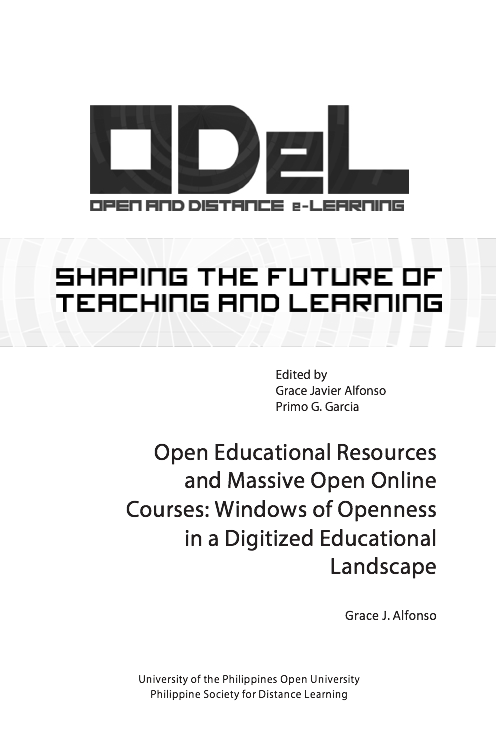
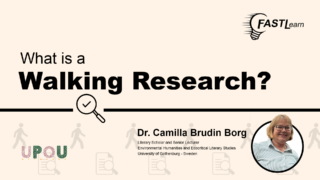
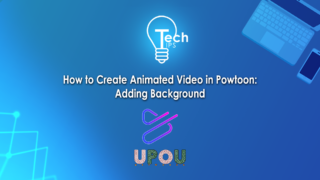
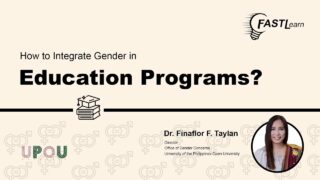
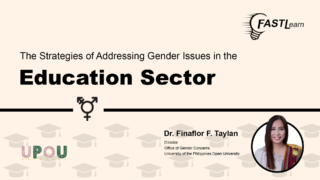
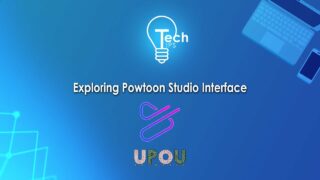
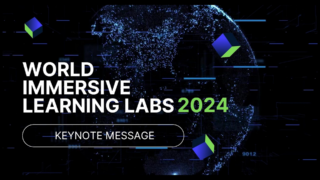
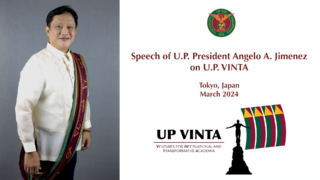
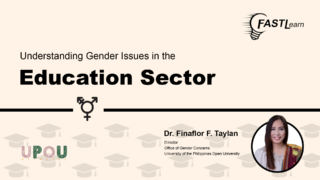
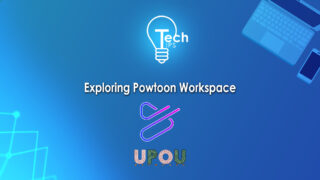
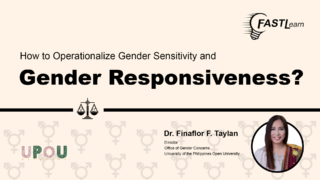
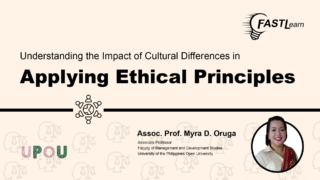
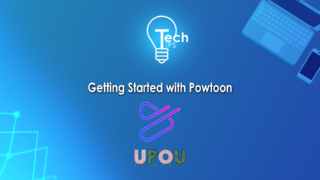
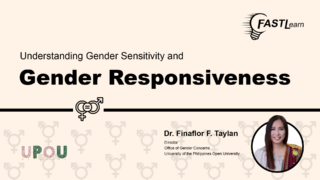
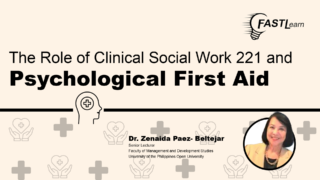
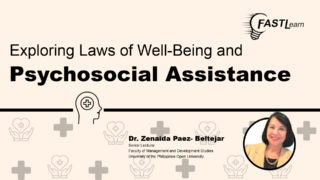
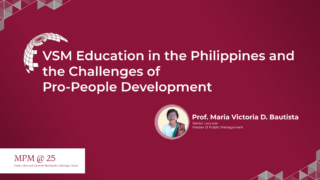
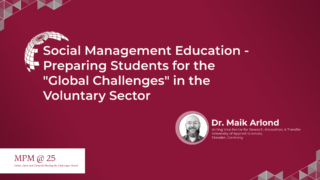
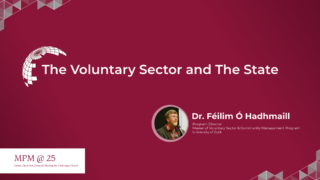
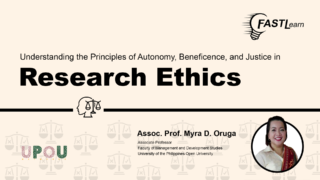
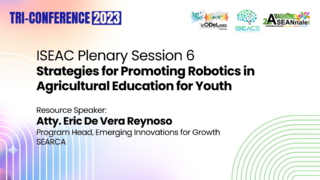
This is a very informative, relevant and useful information for a returning student like me. Thanks!